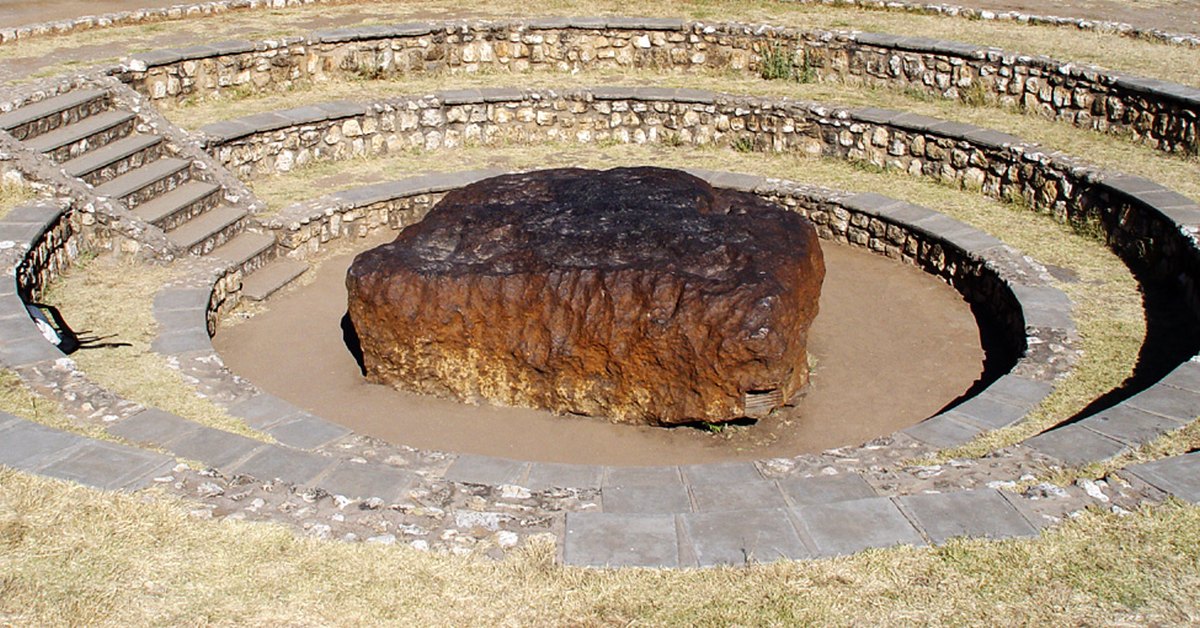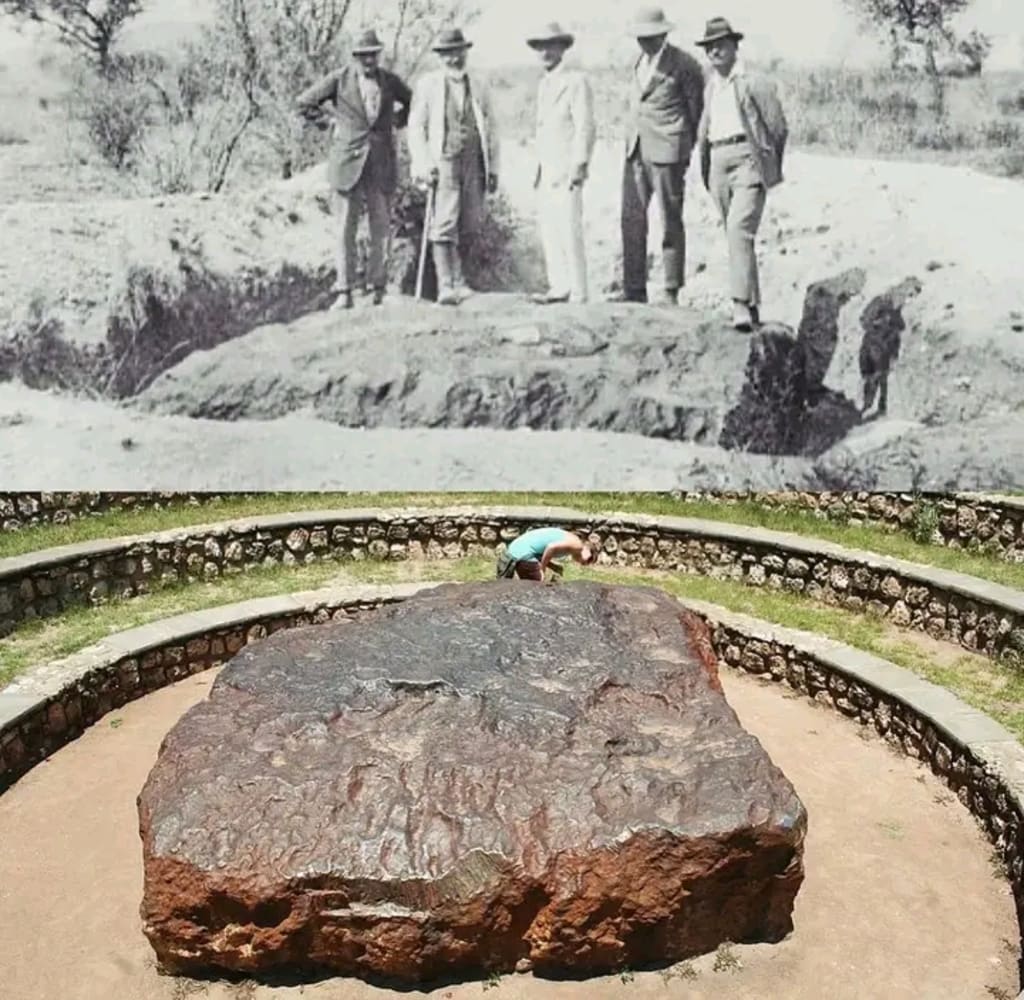The Hoba meteorite, a colossal mass of iron, is one of the most fascinating and enigmatic objects on Earth. Discovered in 1920 by a farmer in Namibia, Africa, this extraterrestrial relic continues to intrigue scientists and the public alike, both for its sheer size and the mysterious circumstances surrounding its impact. Weighing a staggering 60 tons, it is the largest known intact meteorite on the planet and is primarily composed of iron and nickel. Thought to have impacted Earth approximately 80,000 years ago, the meteorite’s most puzzling feature is the absence of any visible impact crater, a phenomenon that has perplexed researchers for decades.
A Meteorite of Monumental Proportions
Weighing 60 tons and measuring 2.7 meters long, 2.7 meters wide, and 0.9 meters high, the Hoba meteorite’s size is unparalleled. Its mass alone makes it the largest solid iron meteorite on Earth, and its flat, slab-like shape sets it apart from the typical rounded meteorites that are commonly found. The sheer scale of the Hoba meteorite offers a glimpse into the magnitude of cosmic events that can occur in our universe. It serves as a testament to the power and randomness of space objects colliding with Earth.

The Mystery of the Missing Impact Crater
One of the most striking aspects of the Hoba meteorite is the absence of an impact crater, despite its enormous size and mass. When most large meteorites strike the Earth, they create significant craters due to their high velocity and intense force of impact. The Hoba meteorite, however, seems to have fallen with relatively low velocity, which could explain why it did not cause the expected impact depression.

Some scientists theorize that the meteorite’s unique shape, being wide and flat, may have allowed it to slide across the surface of the Earth rather than penetrate deep into the ground. This sliding motion would reduce the force exerted upon impact, thus preventing the formation of a crater. This theory, though still debated, has garnered attention as it could offer an explanation for the anomaly.
Another possibility is that the meteorite struck a particularly soft surface, such as a sandy or marshy area, which might have absorbed the impact without leaving behind the typical crater. However, no definitive explanation has yet been agreed upon, and the mystery of the missing crater continues to capture the imaginations of scientists and laypeople alike.
The Composition of the Hoba Meteorite: A Window to the Cosmos
The Hoba meteorite’s composition is as intriguing as its size and impact history. Made primarily of iron, with traces of nickel, cobalt, and other elements, the meteorite is a valuable object of study for scientists interested in the composition of celestial objects. The high concentration of iron and nickel is typical of meteorites that come from the core of larger celestial bodies, like asteroids or even planets that broke apart in space.

Its unique composition gives researchers insight into the formation of our solar system and the materials that make up planetary bodies. By studying the Hoba meteorite, scientists are able to learn more about the conditions in the early solar system and the processes that led to the formation of planets and other celestial bodies.
Preserved as a National Monument
Today, the Hoba meteorite remains at the site where it was discovered, preserved as a national monument in Namibia. It has become a popular tourist attraction, drawing visitors from around the world who come to marvel at its sheer size and ponder the journey it took through space before arriving on Earth. Standing as a monument to the vastness of the universe and the mysteries of space, the Hoba meteorite serves as a physical reminder of the interconnectedness of Earth and the cosmos.

The meteorite’s preservation allows it to continue to be a valuable educational resource for scientists and the general public. It provides a tangible link to the universe beyond our planet, offering an opportunity for individuals to reflect on the immense forces at play in the universe and how they shape the world we live in.
A Cosmic Puzzle Awaiting Answers
While much has been learned about the Hoba meteorite since its discovery, it still holds many secrets. The absence of a crater, the meteorite’s large size, and its composition continue to be the subject of scientific investigation. Its unusual characteristics challenge our understanding of meteorite impacts and raise questions about the forces that shape our planet.
In the end, the Hoba meteorite remains an extraordinary example of the mysteries of the universe. It is not just a piece of space debris; it is a window into the past, offering clues about the origins of our solar system and the way celestial objects interact with Earth. The Hoba meteorite’s enigmatic nature, combined with its monumental size, ensures that it will continue to be a subject of fascination for generations to come, inspiring curiosity and further investigation into the cosmic forces that shape our world.

